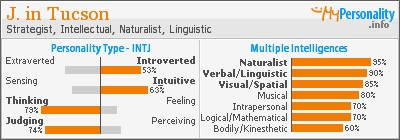The "Jahng-mah" (summer monsoon) has begun here on Jeju-do island, off the SW coast of Korea; it's a rainy night...Over the next week or so, the weather pattern will creep up the Korean peninsula--almost half of the country's rainfall falls just in July and August--Seoul gets an average of 50-plus inches of rain a year! Compare that with 'rainy' Seattle's thirty-something-inches...
Fortunately, our arrival yesterday afternoon and touring around today have been mostly dry...
So, yesterday morning we left Sokcho--bound on a bus for the north-central city of Wonju, where we caught a plane to get to Jeju-do...
...my visit with my uncle flew by, but my mother seemed to truly enjoy spending time with her brother...and his health improved noticeably during our stay...so, leaving Sokcho was not as difficult as we'd thought it might be; we all spoke of 'next time' instead of having to think 'we may never see one another again'...
A couple of green scenes from the countryside between Sokcho and Wonju:
...I wish I knew what was growing down in the valley--such a vivid light green...
...at the bus terminal in Wonju--there was a "Krispy Kreme!" Again--as with the Dunkin' in Seoul, fun seeing how local tastes have changed the U.S. chain:
"Kruffins"...huh?! Oh yeah--'kruffins,' as in KRispy KReme MUFFINS...get it? More fun to say than to eat, my wife says, though...
Across the street from the doughnut shop--more fun with 'Engrish'--can you make out the lettering? This is the "KING DUM MOTEL." Breathtaking. The name alone makes me want to stay there...
("...a horse, a horse...my KING DUM for a horse!")
...cute cow, eh?...the countryside around Wonju is known for its prized beef:
Daily--one flight in, from Jeju...and one flight out, to Jeju...
After going through security, you get on a bus, which crosses the highway to the adjacent Air Force base; Korean Air Lines is allowed to take off from the military runway for its flight to the island...
In the terminal, I tried to be discreet, but I just had to get a picture of this:
Shaven head and grey 'hanbok' clothing--a Buddhist monk...
a Buddhist monk checking his text messages on his smart phone.
This is today's South Korea.
==================================
After our arrival on the island last night, this morning's tour of Jeju-du began with an underground experience:
...after a kilometer of walking in the dark, dripping lava tube--here's the 'largest lava column in the world:'
...re-emerging to the surface; welcome warmth after a couple of kilometers of damp 55-degrees; the temperature in the lava-tube is constant...
These are some of the omnipresent 'tol-hah-roo-bahng,' or traditional 'stone grandfather'-statues. ('Hah-roo-bang' is the Jeju-dialect word for 'grandfather;' 'haraboji' is the term on the mainland.) They're almost 'Polynesian'-looking, eh? Sculpted from volcanic stone, these guys are the island's totemic trademark, along with tangerines...
After the lava-tube-cave, we arrived at this almost-Irish-looking scene--Ilchulbong peak, which means 'sunrise rock,' a crater at the eastern tip of the island:
...one can hike up to the rim of the several-hundred-feet-high seaside crater...
...alas, the sign above is a better shot of the crater than anything I could get with my camera, as sea-fog rolled in right as we got to the top
...but check out the cove below:...and down at sea-level...
...divers emerge from the clear waters--and they're all hardy middle-aged women:
...the famous 'Haen-nyo' of Jeju-do--the 'diving maidens' who dive for shellfish, seaweed--anything edible...such as sea urchins!
...caught fresh......processed fresh...
...and ready to eat!
...we happened to hit the right time of year--sea-urchins are not always in season...they're considered a delicacy, especially by visiting Japanese tourists...
And, yes. I tried it.
Tastes of the sea, what else?
The Haen-nyo might well be a dying tradition...With more education, modern young women are not learning and continuing this centuries-old-lifestyle--it's hard hard work...there are only about 5000 Haen-nyo left on the island--many in their 50's and 60's! These are hardy grannies, eh?
So...Come now to see them. A few more years, and the haen-nyo might be no more...
========================
A lasting legacy of the period of Mongol occupation of the island eight centuries ago are horses:
...some of the traditional lava-rock and thatch-roofed houses:
...and volcanic-pigsties:
...just as in mainland Korea, Jeju-do has the custom of outdoor food-storage and food-fermenting 'jars:'
...looking toward the center of the island: the slopes of Halla-san, the central volcanic peak, and the highest point in South Korea, hidden by clouds and showers...
...hydrangea are everywhere right now:
...and the day's last walk before heading back to our hotel in Jeju City, a stroll around San-gum-bu-ri crater, a lush micro-climate in an extinct volcanic 'bowl:'
...where I am NOW, as I type this:
...the view from the rooftop of our hotel in Jeju-city--a neighborhood of affordable tourist hotels and eateries, chaotic narrow streets, with the occasional palm tree amid the mid-rises...
Tomorrow, weather permitting, we'll tour around the western half of the island (a tea-plantation, and one of the few waterfalls that drop directly into the ocean are on the itinerary)...then the evening flight up to Seoul.

2 comments:
oh so much good stuff in your last couple of posts, hand drip, arm socks and my fave kruffins!!! oh and the photos are okay too!!
Hey there! Good to hear from you...hope all is well in
Ballard...yep--family, scenery, food, and ENGRISH! S. and I are having a hoot of a time...
Post a Comment